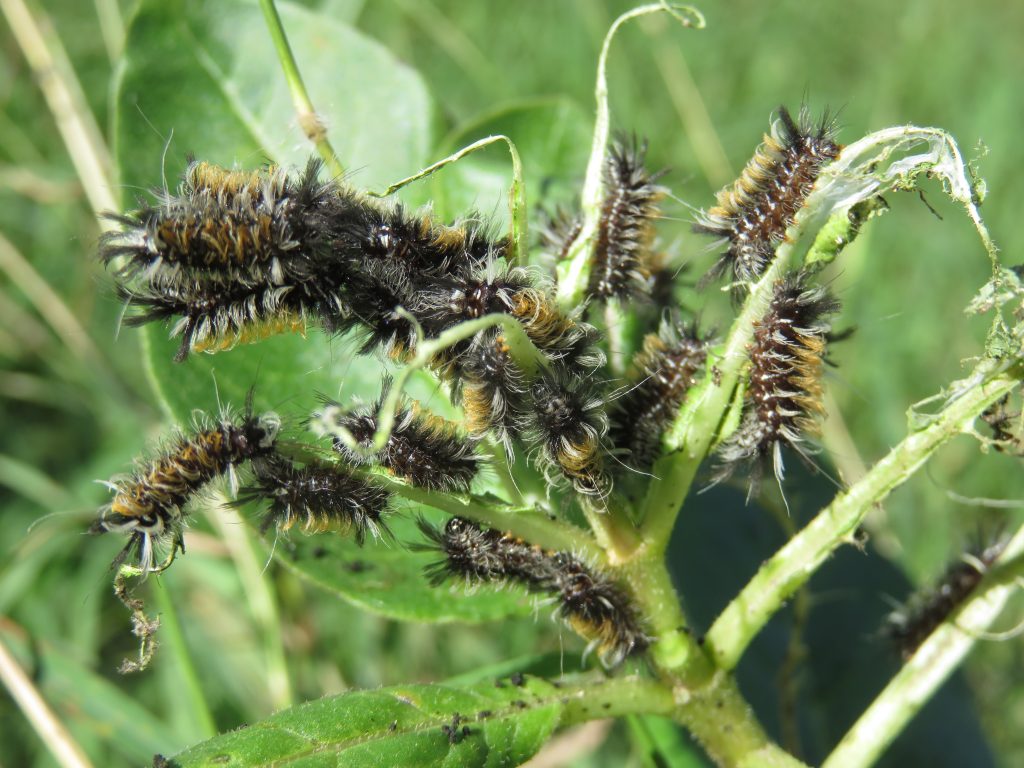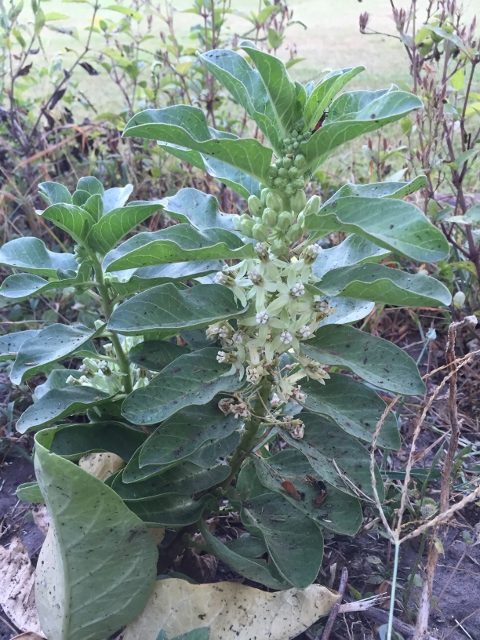by James Bennie

Recently, much has been written about Monarch butterflies and the importance of planting their host plant milkweed to help Monarchs increase their numbers. Zizotes, our native milkweed, is important to many other insects and spiders as well.
The book Milkweed, Monarchs and More by Ba Rea, Karen Oberhauser, and Michael Quinn, has a lot of photos and information about the insect populations that can be found on the milkweed plant.
After looking at this book, I was inspired to keep track of the critters that I found on a milkweed patch I have in Olmito.
Over the past year I have found a long list of various insects and spiders who use the plant in various ways.
Several butterflies and moths other than Monarchs use the plant as a host for their caterpillars.
The Queen and Soldier butterflies are related to the Monarch and also lay their eggs on milkweed plants.
Milkweed Tussock moth caterpillars devour the plant as well. I have also found numerous other caterpillars that I have not yet identified.
The flowers of the Zizotes milkweed attract many moths, butterflies and wasps that just drink their nectar. Tarantula hawks, large wasps with a nasty sting that lay their eggs on Tarantula spiders, are frequently found drinking nectar from milkweed flowers. Although the Tarantula hawk wasps are scary looking, they will not sting you unless provoked.
Orange and black Milkweed Bugs are common on all types of milkweed plants. They eat the plant and the seeds when available.
New plant growth is home to tiny orange Oleander and other native aphids who provide food for Ladybugs and their dragon-like larvae.
Ants are often attracted to aphids, too, due to the sweet “honey dew” that aphids produce. A number of other small flies, wasps and other insects such as Ichneumons frequent milkweed plants seeking other insects or caterpillars to lay their eggs on. These eggs hatch out and the small larvae parasitize their host insect.
Like in a horror movie, these larvae eat their host from the inside out while it is alive. I have found other insects such as dragonflies, damselflies, and various spiders spending time on this popular plant searching for prey to dine on. Praying Mantis, Ambush bugs, and Assassin bugs also seek meals here.
Grasshoppers, crickets, and other beetles and insects seem to like the company of others and also hang out on milkweed plants. It seems a miracle that any caterpillars can survive this long list of predatory insects found on milkweed plants.
Somehow, they do survive and fly off as butterflies or moths to lay their eggs on the tender shoots of new milkweed plants to continue their life cycle for one more round as they have for millions of years.
Planting native species of milkweed, such as the Zizotes milkweed in our area, will help not only the Monarch butterfly but countless other species of insects and spiders who depend on this special plant to live on and around.
Visit www.rgvctmn.gov for a list of local native plant growers.


Leave a Reply